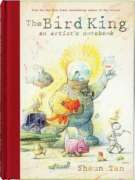
A collection of sketches, drafts, and scanned ephemera from the artist who created The Arrival (2007) and Tales from Outer Suburbia (2009).

A collection of sketches, drafts, and scanned ephemera from the artist who created The Arrival (2007) and Tales from Outer Suburbia (2009).
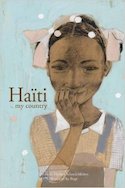
For several months, Quebec illustrator Roge prepared a series of portraits of Haitian children. Students of Camp Perrin wrote that accompanying poems, which create, with flowing consistency, Haiti My Country. These teenaged poets use the Haitian landscape as their easel. The nature that envelops them is quite clearly their main subject. While misery often storms through Haiti in the form of earthquakes, cyclones, or floods, these young men and women see their surrounding nature as assurance for a joyful, confident future.
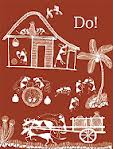
Do! is a set of action pictures rendered in the elegantly minimalist Warli style of tribal art. It introduces basic verbs to the young reader through a series of delicately drawn pictograms, which both illustrate the verb and tell a further string of stories. Every page or pair of pages invites the child to explore a busy world and make up her own tales. The art conjures up a world teeming with human figures, animals, plants, and birds.
The illustrations in Do! were made by people belonging to a tribal community in Maharashtra, in western India. Ramesh Hengadi, Rasika Hengadi, Shantaram Dhadpe, and Kusum Dhadpe are the artists featured in this book.
Do! was conceived of by Gita Wolf, who has written more than seventeen books for children and adults. A highly original and creative voice in contemporary Indian publishing, she has pursued her interest in exploring and experimenting with the form of the book and its status as a revered cultural object.
“Youngsters will delight in Neel’s fantastic excuses… The illustrations, a collage of tinted photographs and art, provide an appropriately surreal backdrop” -Kirkus Reviews” Art and text intertwined with balanced whimsy, imbue Neel’s tall tales with colorful energy and unlimited creativity.” – BookDragon, Smithsonian Asian Pacific American Program Who doesn’t know a child who is always ready with an implausible excuse when caught out by an indignant adult? Excuses Excuses builds on this universal experience using an Indian setting. Young Neel is the boy next door who can’t help getting into trouble, and yet he is endearing in his explanations. He has one for every day of the week and for every kind of adult ? it seems that he may never run out of them! Wildly funny and imaginative, this narrative in nonsense verse is fast-paced and keeps young readers guessing. Unusual and dramatic art that captures the improbable colors of India adds zest to a story that all children would want to be a part of.
When a boy being chased through present-day London seeks refuge in the National Gallery, a dog escapes from the painting of one Dutch master and together they leap into the painting of another, where their adventures in seventeenth-century Delft are a prelude to returning to London and continuing the chase.
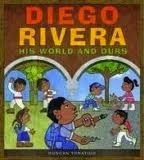
This charming book introduces one of the most popular artists of the twentieth century, Diego Rivera, to young readers. It tells the story of Diego as a young, mischievous boy who demonstrated a clear passion for art and then went on to become one of the most famous painters in the world. Duncan Tonatiuh also prompts readers to think about what Diego would paint today. Just as Diego’s murals depicted great historical events in Mexican culture or celebrated native peoples, if Diego were painting today, what would his artwork depict? How would his paintings reflect today’s culture?
See the review at WOW Review, Volume 4, Issue 3
When Noot is finally allowed to paint umbrellas like the other women and girls in her village, she secretly hopes that she might be chosen as this year’s Umbrella Queen. Carefully, she creates serene flowers and butterflies- exactly as she has seen her mother and grandmother do for years.
But soon her imagination takes over, and Noot finds herself straying from the old patterns to the dismay of her family, who depend on the traditionally painted umbrellas for their livelihood.
Her parents tell her she must go back to the old designs and Noot obeys, knowing that the King is coming soon to name the one who has painted the most beautiful umbrella. After all, the King would never choose a queen who breaks from tradition…would he?
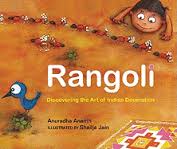
Every morning Ajji’s village is decorated with rangolis – special patterns made usually from rice flour and sugar or materials such as cereals, pulses, grains, sand or beads. Dots, lines, flower designs, on the ground on the wall, everywhere. Food for ants, beautiful to look at and fun for birds, dogs and children. This delightful book makes a wonderful introduction to the art of rangoli and the illustrations carry the exuberance of these earthy patterns.The book includes a spread at the back on how to make your own rangolis. Rangoli is one of the most popular art forms in India. It is also known in different parts of the country as muggu, kolam and alpona. The motifs used are usually taken from nature or geometric patterns. Rangolis are particular popular around festivals such as diwali – the Hindu festival of light.
This book presents the history, culture, art, and economics of the Chewa people of Malawi, Zambia, and Mozambique.
Fifty-six newly released titles that provide a fascinating portrait of the many peoples that inhabit Africa. These books have natural curriculum tie-ins with multiculturalism, geography, and social studies.